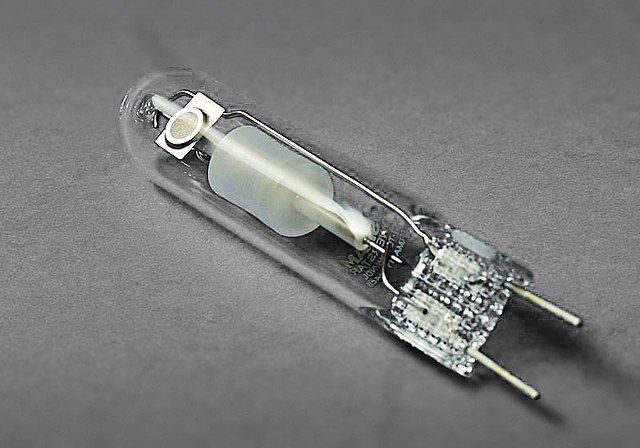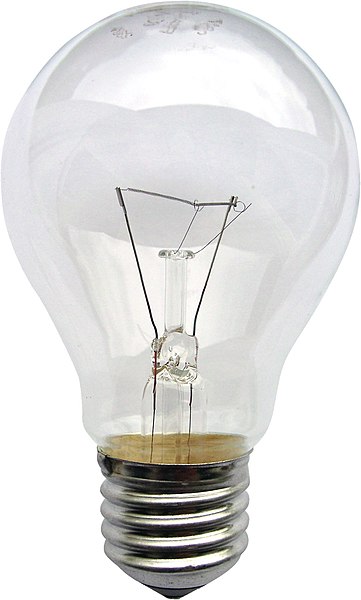A lightbulb socket, lightbulb holder, light socket, lamp socket or lamp holder is a device which mechanically supports and provides electrical connections for a compatible electric lamp base. Sockets allow lamps to be safely and conveniently replaced (re-lamping). There are many different standards for lampholders, including early de facto standards and later standards created by various standards bodies. Many of the later standards conform to a general coding system in which a socket type is designated by a letter or abbreviation followed by a number.
A standard American three-way lightbulb socket
115-volt airway beacon light bulb with a Mogul bi-post base
Metal halide lamp with G8.5 base
Architectural strip lamp with S14s connection
Edison screw (ES) is a standard lightbulb socket for electric light bulbs. It was developed by Thomas Edison (1847–1931), patented in 1881, and was licensed in 1909 under General Electric's Mazda trademark. The bulbs have right-hand threaded metal bases (caps) which screw into matching threaded sockets. For bulbs powered by AC current, the thread is generally connected to neutral and the contact on the bottom tip of the base is connected to the "live" phase.
230-volt incandescent light bulb with E27 screw base
Three-way E26d light socket
E26 Edison screw to NEMA 1-15 adapter
From left to right: E27, E14, and E10 bulbs






